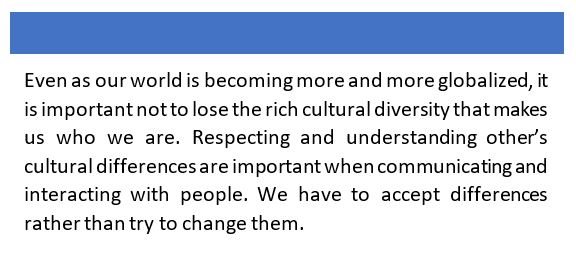
This is part of a series of articles by exploring the opportunities in different employment fields.

Career opportunities in the field of cultural heritage are wide and varied.
It is possible to work locally or internationally, across many disciplines, in tangible or intangible cultural fields, protecting and documenting a community's way of life and its traditions.
By embracing our diversity we can learn more about our world and ourselves, enabling us to grow and thrive spiritually.
Cultural heritage is the legacy passed on from generation to generation. Importantly, it shapes the way people live.
There are many aspects that define someone's cultural heritage, including customs, traditions, languages, values, places, and objects. Culture, though, can be separated into two different categories, tangible and intangible.
Every year, cultural knowledge is being lost for many reasons. Languages die out, or archeological sites are not protected. Yet, cultural diversity is also what makes our world an interesting and diverse place. It is also why such a field is an interesting one.
It is worth recognizing the difference, however, between tangible and intangible culture. Additionally, working in each sector requires different skills and experience.
Tangible cultural heritage refers to physical artifacts produced, maintained, and transmitted intergenerationally in a society. Examples include the Taj Mahal, Machu Pichu, and the Great Wall of China. All these heritage sites and monuments are here thanks to human creativity and have a global cultural significance. It is important to preserve these cultural sites because of their value to local communities. Furthermore, and though they are physical objects, they help shape the aspirations, values, and beliefs of a person’s national identity.
Not only are these sites important for nations, but are also recognized worldwide. This is why UNESCO - the United Nations Educational Scientific and Cultural Organization - has created a very long list of safeguarded tangible cultural heritage sites. Countries may try to include something they believe to be of cultural significance and if UNESCO agrees, it will be added to the list.
Jobs in this field include archeologists, museum curators, building engineers, cultural guides, academics, and archivists.
Intangible cultural heritage can sometimes be harder to define.
Essentially, intangible culture as stated by UNESCO is nonphysical intellectual wealth, such as folklore, customs, beliefs, traditions, knowledge, and language. Some examples from the UNESCO list are the indigenous Day of the Dead in Mexico, tango music and dance from Argentina and Uruguay, flamenco from Spain, and the tradition of Kimchi-making in Korea. As you can see, it is harder to  define intangible cultural heritage, but at the same time, it is immensely more varied and can encompass almost anything that is traditional and has cultural relevance.
define intangible cultural heritage, but at the same time, it is immensely more varied and can encompass almost anything that is traditional and has cultural relevance.
Examples of jobs in the intangible culture sector include anthropologists, researchers, linguists, and sociologists.
We are who we are because of cultural values passed down to us. Both tangible and intangible cultures are important to communities and individuals, even in this globalized world; we take our values and culture wherever we go. We have to recognize the importance of both and preserve all facets of culture.
This is what makes our world beautiful, diverse, and interesting.
Further reading:
Starting your career journey by
Social media's impact on football by
Image:
Good job and interesting reading